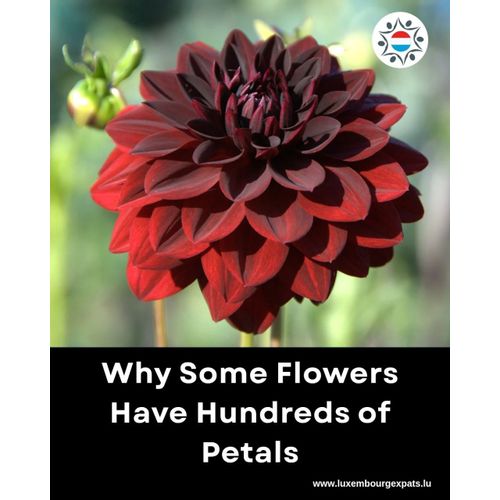When a Bloom Becomes a Blooming Marvel — Why Some Flowers Have Hundreds of Petals
LuxembourgPosted on 28 November 2025 by TeamIn nature’s catalogue of flowers, petals usually serve a simple role: attract pollinators. Most blooms flaunt a modest count — just enough petals to catch eyes and entice bees or butterflies. But every now and then, a flower mutates and transforms into a “double flower,” where the original structure shifts, and petals multiply. These extravagant blossoms don’t just stand out — they completely reshape what a normal flower looks like.
Botanists explain this phenomenon through a genetic twist: the same ancestral blueprint that once produced petals, stamens, and other floral organs can be “rewired.” A mutation might reroute what should have become stamens or reproductive parts into petals instead — turning organs designed for reproduction into layers of petals. The result? A bloom packed almost entirely with petals, often sterile but striking beyond compare.
Some familiar garden favourites illustrate this beautifully. For example, double-flowered versions of meadow buttercups — also known as “bachelor’s buttons” — or double buttercups, lesser celandines, and marsh marigolds (all commonly sold in garden centres) sometimes feature petal-counts vastly higher than their wild ancestors. These are not merely aesthetic tweaks — they’re dramatic shifts in form, where function is traded for flamboyance.
That said, such lush floral displays remain rare among truly wild plants. Most species stick to modest petal counts, because their evolutionary strategy remains rooted in efficient pollination and reproduction. But among gardeners, horticulturalists, and flower-lovers, double-flower versions have become a beloved anomaly — a testament to how flexible and surprising floral genetics can be when nature takes a detour.
Read More : Which flower has the most petals? - Discover Wildlife
Join the community of your own - #1 home-grown LuxExpats app
SignUp Free : luxembourgexpats.lu
I am your contact
Team
Chat









